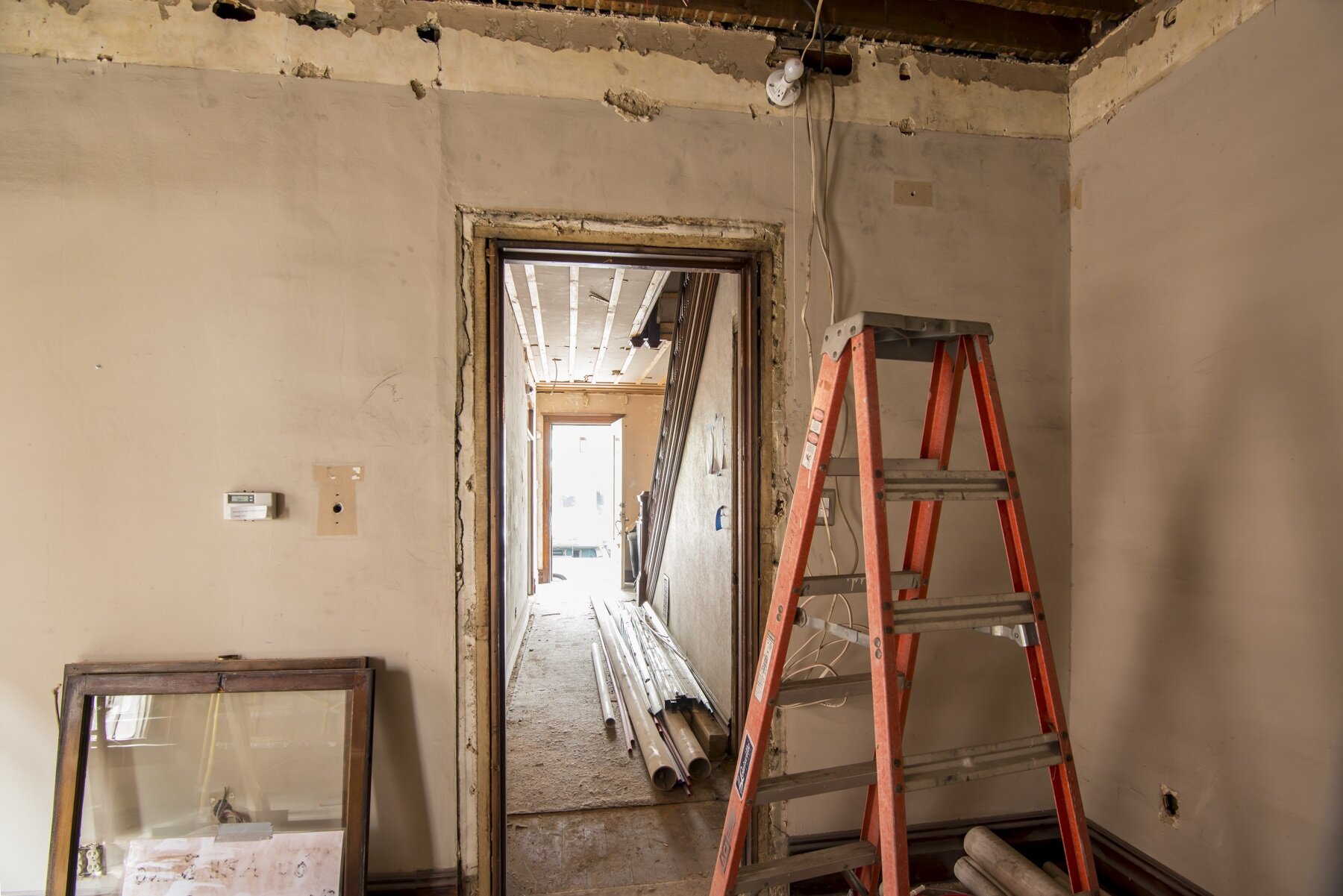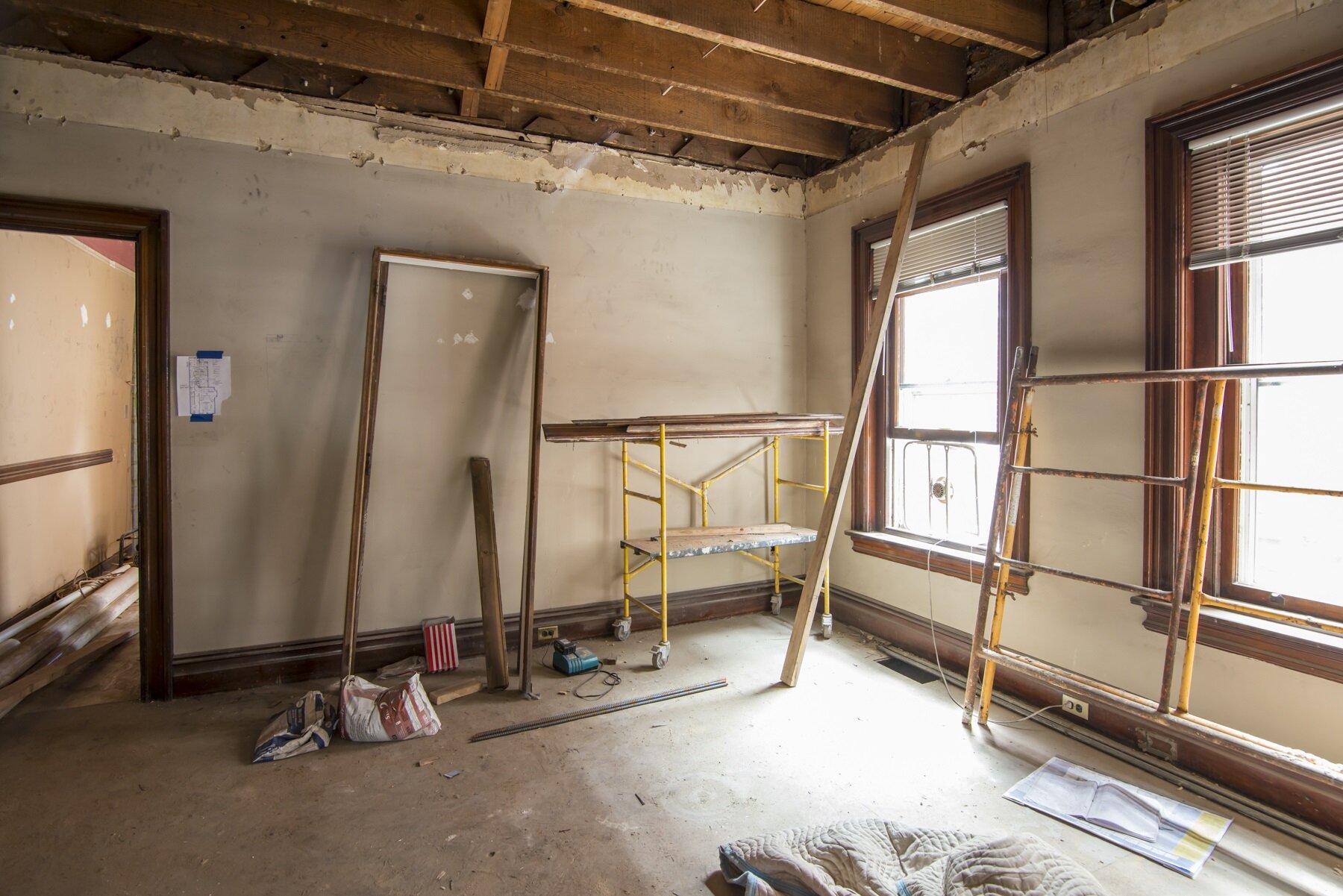Our Renovation – Den Soffit Lighting
As you’ve seen in my layered lighting video (link here) the complete gut and renovation of our circa 1905 historic home gave me ample leeway to focus on ways to demonstrate different types of lighting options to my clients via my “living showroom” - otherwise known as my own home. The removal of the dropped ceiling grid installed by the previous commercial owners allowed us to reveal the old lathe and plaster ceilings and to fully embrace the nearly 10 foot ceiling height of the original room design.
Most often recessed lighting alone can successfully light a space, but varied lighting sources give a room character AND functional options for different activities within a space. But the main purpose of this room, besides being our central gathering space for entertaining, was two-fold. While my husband would be watching TV, I would be watching TV while doing something else, too. Typically I am grooming the dog, researching product on my laptop or catching up on my pile of design periodicals. So I wanted to incorporate a light source that would allow me to “do my thing” while my husband was enjoying a good Netflix binge watching session. The other aspect I had to take into account was the fact that the space is not large enough to accommodate table lamps, and even wall sconces would cast a disturbing reflection on the TV screen.
My solution was what I refer to as a “dropped-soffit ceiling”. We created a lightweight central soffit which drops down from the main ceiling approximately 16” and is 12” smaller than the walls on all sides. This left us with a perimeter channel in which we installed a linear LED strip style light source that created a cove-style lighting. This light is bright enough to allow me to work without creating any glare on the TV screen.
The other benefit of the dropped soffit came when we installed our LED fireplace and I wanted to add some architectural lighting in the ceiling. Normally this would be an arduous task that required several holes in the ceiling along with patching and painting. But because there is open space above the soffit our electrician was able to easily add two wafer-style recessed directional spotlights on a separate switch – without any patching and repair – Yay!
At first my husband balked at the extra work involved for this technique. But even he has to admit that most of the time, unless I am really in need of direct light – or I am cleaning – we opt to use the cove lighting for my scenarios. Just another example of a successful layer lighting plan that offers options AND better lighting to one of our most-used rooms in the house!


